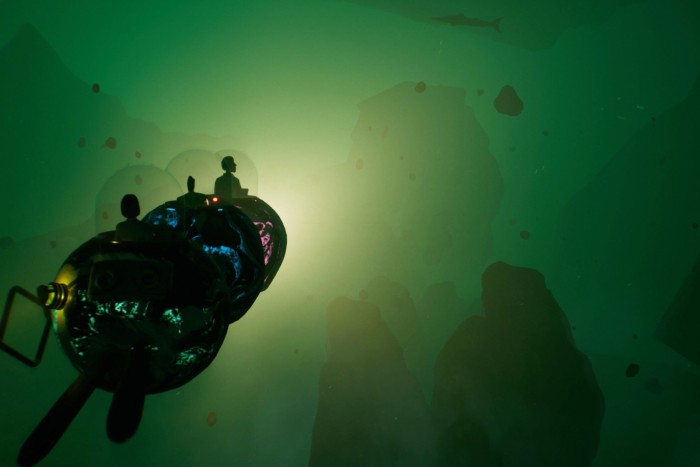Unlock the Editor’s Digest for free
Roula Khalaf, Editor of the FT, selects her favourite stories in this weekly newsletter.
The hero of the peculiar and poignant drama Harold Halibut is a man of endurance. A janitor aboard an aquatic space colony called the Fedora 1, he does his dull daily job without complaining, even when berated by his colleagues. But he longs for greater meaning than cleaning filtration pumps can offer. In one scene, he sings: “My best friend is a mop, I work till I drop . . . There must be more to life.” And so it continues until lo, his cry is answered by a well-timed deus ex machina: the arrival of an ailing alien whom Harold is charged with nursing back to health.
Prior to this moment, Harold Halibut plays just as you might expect from a game starring a jaded janitor. You scrub graffiti off walls, fix appliances and chat with eccentric crewmates before returning home via an odd tube system that literally flushes you out. In another game, these simple tasks might leave you underwhelmed, but such are the ravishing visuals and finely drawn worldbuilding of Harold Halibut that there is pleasure in just ambling round its gorgeous retrofuturist setting.
The game possesses a singular look, a synthesis of the analogue and virtual that was the result of a painstaking design process. Everything you see was made in the real world first: models made of clay and wire; sets and locations built in the studio of Cologne-based developer Slow Bros. These physical objects were photographed from every angle before being scanned into a computer, a process known as photogrammetry. The resulting aesthetic is so gorgeously tactile, so texturally convincing, that you may feel the urge to reach into the screen and touch it. This adds to the sensation that the act of playing Harold Halibut is akin to the childhood pastime of directing action figures round play sets.

Still, once the initial impact of the visuals wears off, you might begin to feel a little like this depressed worker wandering through the confines of the Fedora 1: stifled, melancholic, perhaps a touch bored. The flat, planimetric cinematography, which hems Harold into corridors, only adds to this feeling. But then the story ratchets up a notch as you make your way off the ship and to the alien’s home. The camera suddenly snaps out of its two-dimensional position to something freer; the oppressively straight surfaces of the ship make way for naturalistic lumps and bumps of an extraterrestrial cave. Both Harold and the player are given a new world to gaze upon, marvelling at its possibilities.
The strength of Harold Halibut, beyond its spectacular handmade visuals, is its balance. This game of admittedly light interactions is fleshed out by tamped-down writing, loping rhythms, a wonderfully worn-in sense of design and puckish dialogue, elements that let you appreciate the inner lives of its characters within the world at large. It ends with an uncomplicated and unashamedly sentimental message: that the deeper meaning Harold longs for resides in both.
★★★★☆
Available now on Nintendo Switch, PC, PlayStation and Xbox


